A variety with an amazing taste that you will definitely love - the Raspberry Giant tomato
Tomato varieties with large fruits attract special attention of summer residents, because they give a good harvest of fruits, the weight of which sometimes reaches 1 kilogram! Consider one of the most famous large-fruited varieties - the Raspberry Giant.
The content of the article
Description of the variety
The Raspberry Giant variety was bred by Russian breeders. The patentee is the Sedek agricultural company. A. N. Lukyanenko, S. V. Dubinin, I. N. Dubinina are recognized as authors. The variety was included in the State Register in 2007. This gorgeous tomato is intended for growing both in the open field and under film shelters.
The variety is declared as early maturing, tall, determinantthat does not require pinching. It reaches a height of 90 centimeters. The stem is powerful, the foliage is dense, the rhizome is well developed.
The fruits are truly gigantic: they reach 200-400 grams. For the season, they collect from 6 kilograms of such fruits from one plant. Tomatoes have a slightly flattened shape, pink in color. The skin is dense, so the fruits retain their presentation for a long time and do not crack even during transportation. There are few seeds in them. Giants are good not only in the photo - the taste is also excellent. The pulp of the fruit is juicy, sweet in taste, with sourness.
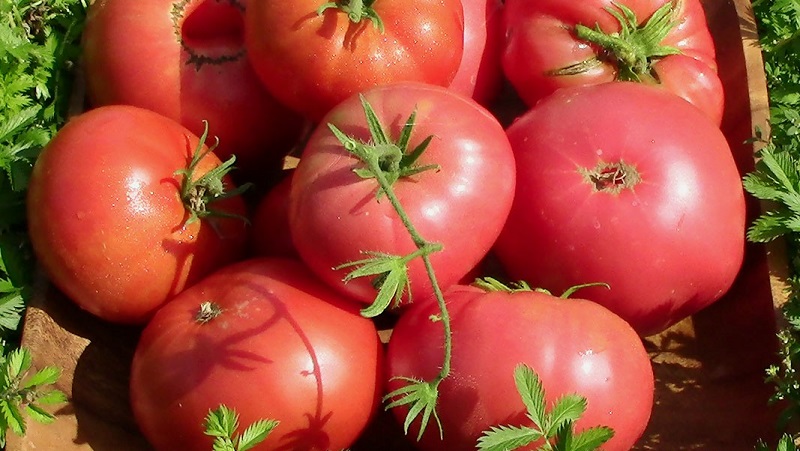
Growing seedlings
Tomatoes are grown in a seedling and non-seedling way. It all depends on the characteristics of the climate in which they have to grow. But even when grown in the southern region, where the climate allows you to plant tomatoes directly into the ground, growing through seedlings accelerates the ripening of fruits and increases productivity.
Seed preparation
Tomato seeds sown after March 10. Before that, they need to be checked for germination and prepared for planting.
Reference. When choosing seeds, you may come across first generation Raspberry Giant F1 hybrids. Know: there are no hybrids in the Raspberry Giant, this is just a marketing ploy! Both in the packaging of the "parent" variety and in the packaging of the F1 hybrid, the seeds are absolutely identical. Producers are simply trying to draw attention to already known varieties, supposedly improving them through hybridization.
We check for germination like this: put all the seeds in a glass of water and wait 20 minutes. We only need the seeds that have fallen to the bottom. If the seed has not drowned, it means that it is poorly preserved, a healthy plant will not work out of it.
After testing for germination, you can soak the seeds in a growth promoter. This will increase the germination rate.
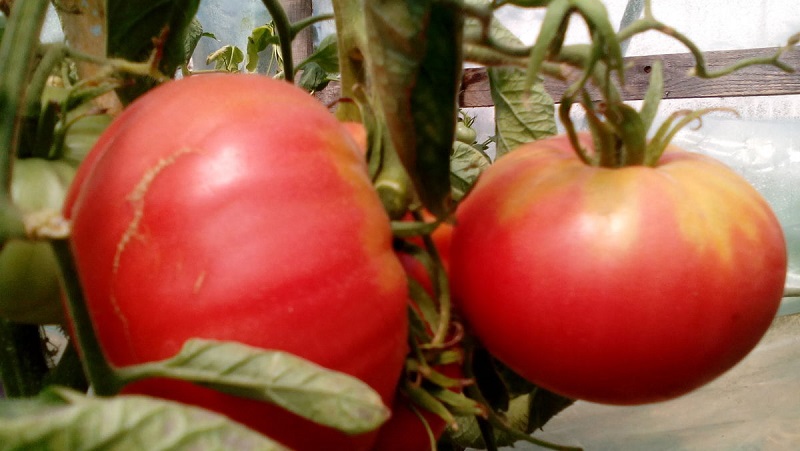
Soil and container for planting
The soil must be nutritious. A substrate of earth, sand and peat is perfect. Ash is added to the soil to lower the acidity. If you do not want to independently deal with the preparation of a suitable substrate, buy a ready-made one. Choose a special seedling soil.
Any planting container is suitable - from a plastic container to a peat pot. The main thing is to make drainage holes at the bottom.
Sowing and growing
We start sowing. We will plant in a common container.
Usually, to moisten the soil during sowing, it is sprayed with warm water, but we will tell you about another method. After sprinkling soil over the seeds, fill the container with snow.
This method is good because, in addition to moistening the soil with melt water, which has long been called "living", we carry out mini-stratification. This increases germination and accelerates seed germination. If you no longer have snow, use melt water.
How to plant seeds:
- Slightly compact the soil.The container should be half full.
- We make grooves about 2 centimeters deep. Leave the distance between the grooves 2-4 centimeters.
- Place the seeds at the bottom of the grooves. The distance between the seeds is 2-4 centimeters.
- Sprinkle the seeds with soil.
- We moisten the earth.
- We cover the container with a transparent lid or foil, put it in a warm, bright place.
- Once a day, be sure to ventilate the greenhouse and remove condensation from the lid.
- As soon as the friendly shoots appear, we open the seedlings.
- Water as the soil dries up. It is important not to overdry, but not to overmoisten.
- To prevent the seedlings from stretching, we make a backlight.
- When the plants have two real leaves, we dive them into separate pots.
- We continue to look after the seedlings and wait for the right time to plant them in open ground.
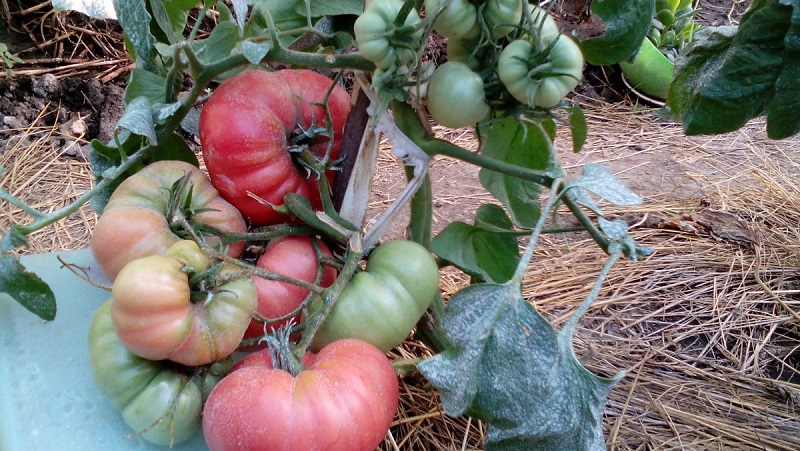
We plant in open ground
When the threat of return frosts has passed, you can plant seedlings in open ground:
- We plant seedlings in the holes at a distance of at least 50 centimeters from each other. When planting, you can add fertilizer to the holes. The most suitable is phosphorus.
- The crimson giant definitely requires a garter. Consider this when landing.
- We water our giants as needed, trying not to fall on the foliage. Water for irrigation must be warm (from a cold plant they stop growing, they can rot the roots). For convenience, you can organize drip irrigation.
- Plants need to be fed several times during the season. Top dressing is stopped 3-4 weeks before the fruit ripens.
- Plants require partial pinching. A good solution is to form the bushes into two stems. Remove all lower leaves up to the first ovary.
- We tie the formed bushes with cotton ropes 10-15 centimeters wide. Thin threads or stiff wires will not work - they will injure the stem.
- We periodically loosen the soil to saturate it with oxygen. The heavier the soil, the deeper the loosening. We do this carefully so as not to damage the roots of the plant.
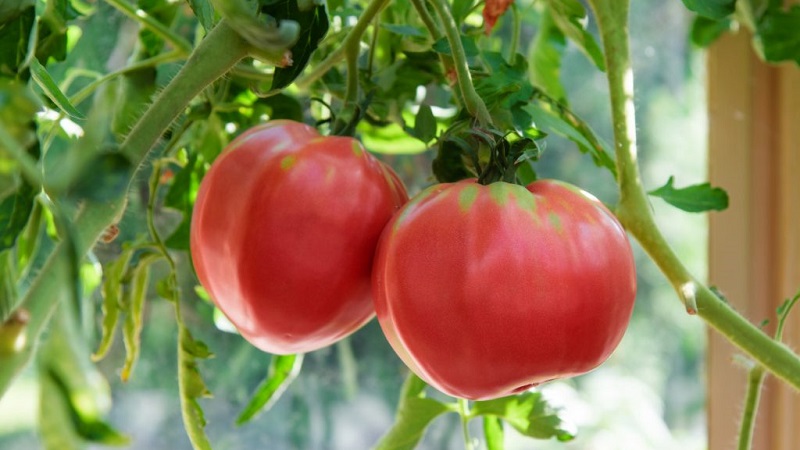
Growing features
In general, the Raspberry Giant tomato does not differ from other determinant varieties in care. However, difficulties may arise due to the large weight of the fruit. The bush may simply not withstand the weight and break. Therefore, be sure to tie up the tomatoes. In order for the tomatoes to ripen well and the harvest to please you, you must leave no more than five fruits on the bush.
Outdoor cultivation
The raspberry giant feels great in a greenhouse, but outside the greenhouse, experienced gardeners advise growing it only in warm climates. If you don't have such conditions, at least provide the bushes with temporary shelter in case of bad weather.
Diseases and pests
Breeders assure that the variety is resistant to all diseases, especially top rot. However, variety reviews often mention that late blight and cladosporiosis dangerous for plants as well as for other varieties of tomatoes.
Although tomato has good immunity to diseases, it can be threatened by pests. To prevent thrips, aphids, spider mites or Colorado beetles from getting to your bushes, spray them with preparations against pests of general action for prevention.
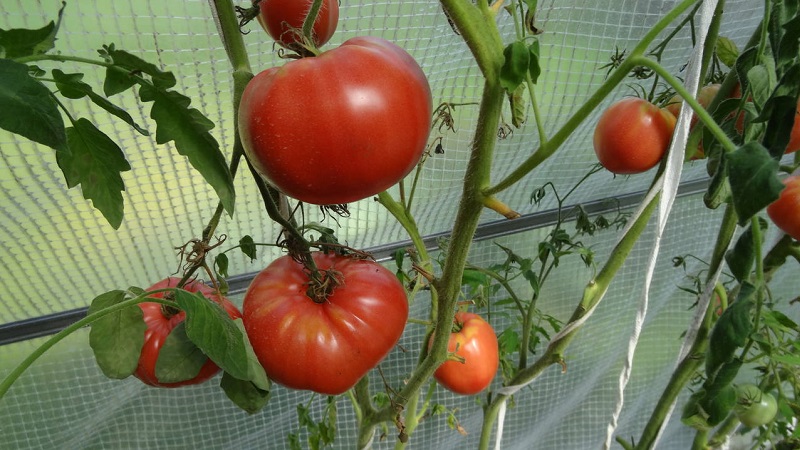
Harvesting
The crop ripens 90-110 days after planting. The fruits tolerate long-term transportation well and are stored for a long time. The main thing is to keep them in a dark, dry place where there are no temperature changes.
The Raspberry Giant is good for both salads and canning. However, it is inconvenient to preserve it due to its large size. Some housewives deal with this problem simply by cutting the tomatoes before cooking. The variety is ideal for making ketchup.
Pros and cons
Summer residents love the raspberry giant for:
- large fruits;
- early maturity;
- good transportability and presentation;
- immunity to many diseases;
- relative ease of care;
- the ability to use both fresh and in blanks;
- a large amount of nutrients and hypoallergenicity.
However, the variety also has disadvantages:
- it is difficult to preserve whole tomatoes for the winter;
- large rhizomes take up a lot of space;
- although special care is not required, it is necessary to form and pinch the bush;
- despite the declared resistance to almost all diseases, the most common of them can still infect the plant.
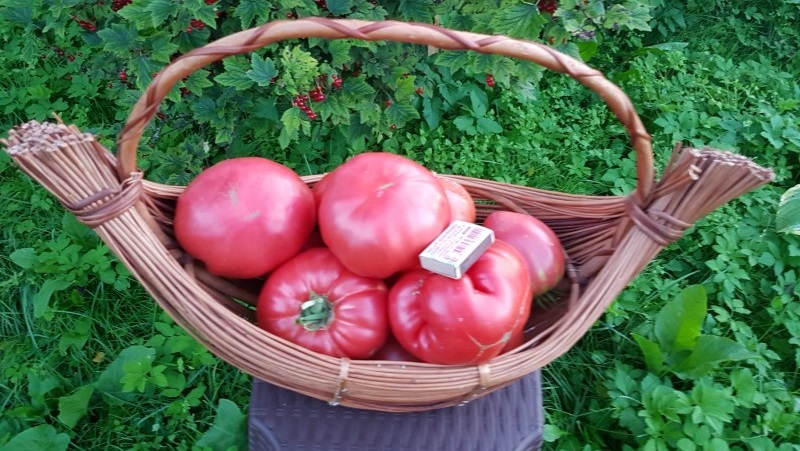
Reviews
In general, the reviews about the variety are positive. Some summer residents note that the official information about the tomato is at odds with the real one. For example, declared as early ripening, in terms of ripening, the variety is more suitable for the characteristics of the mid-season.
Lyubov Salmanova, Novosibirsk: “Raspberry giant - I really, really liked the taste: sweet, fleshy. Raised by an employee. Seeing my unhealthy passion for tomatoes, brought me one for seeds. Grows in a greenhouse, now bears fruit. The yield is high: the fruits are large and there are a lot of them. What is surprising: I don’t tie my hands, and nothing breaks. ”
Nadezhda Pavlova, Volgograd: “My Raspberry Giant was very tall, in the open field it grew to almost three meters in height. Fruiting from June to October. Delicious, sweet with sourness, not insipid. I will definitely repeat it. "
Polina Arslanova, Nizhny Novgorod region: “I have this variety of amateur, and there is a difference with the description. The tomato is indeterminate, the ripening period is average. The fruits are large, and subsequently do not become smaller. I noticed that it is better to grow 1-2 stems. "
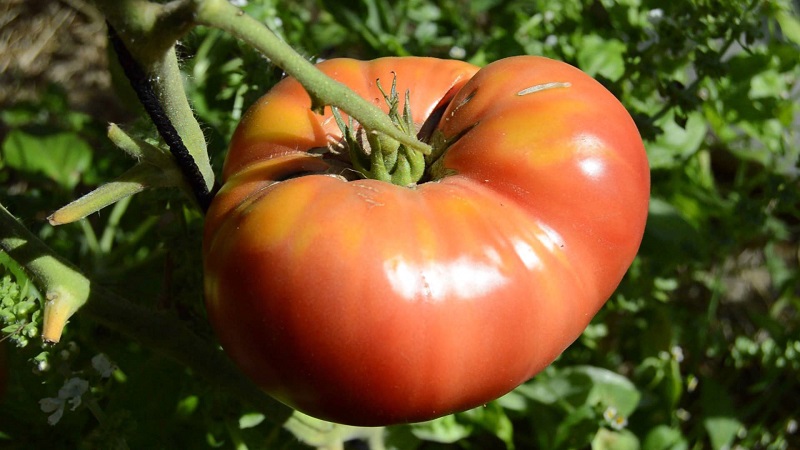
Conclusion
The Raspberry Giant variety is ideal for growing in a greenhouse, even in the northern regions, because it has an early ripening period. Growing it is especially beneficial for those gardeners who rarely go to the country. After all, the plant is relatively unpretentious, gives a good harvest and is resistant to many diseases.
However, only a small number of bushes can be planted in a greenhouse. By planting only the Raspberry Giant, you risk being left without blanks for the winter. But there is a way out: these sweet giants may not fit in a jar entirely, but their delicious pulp is worth spending a little time slicing. We wish you success in growing a gorgeous crop!